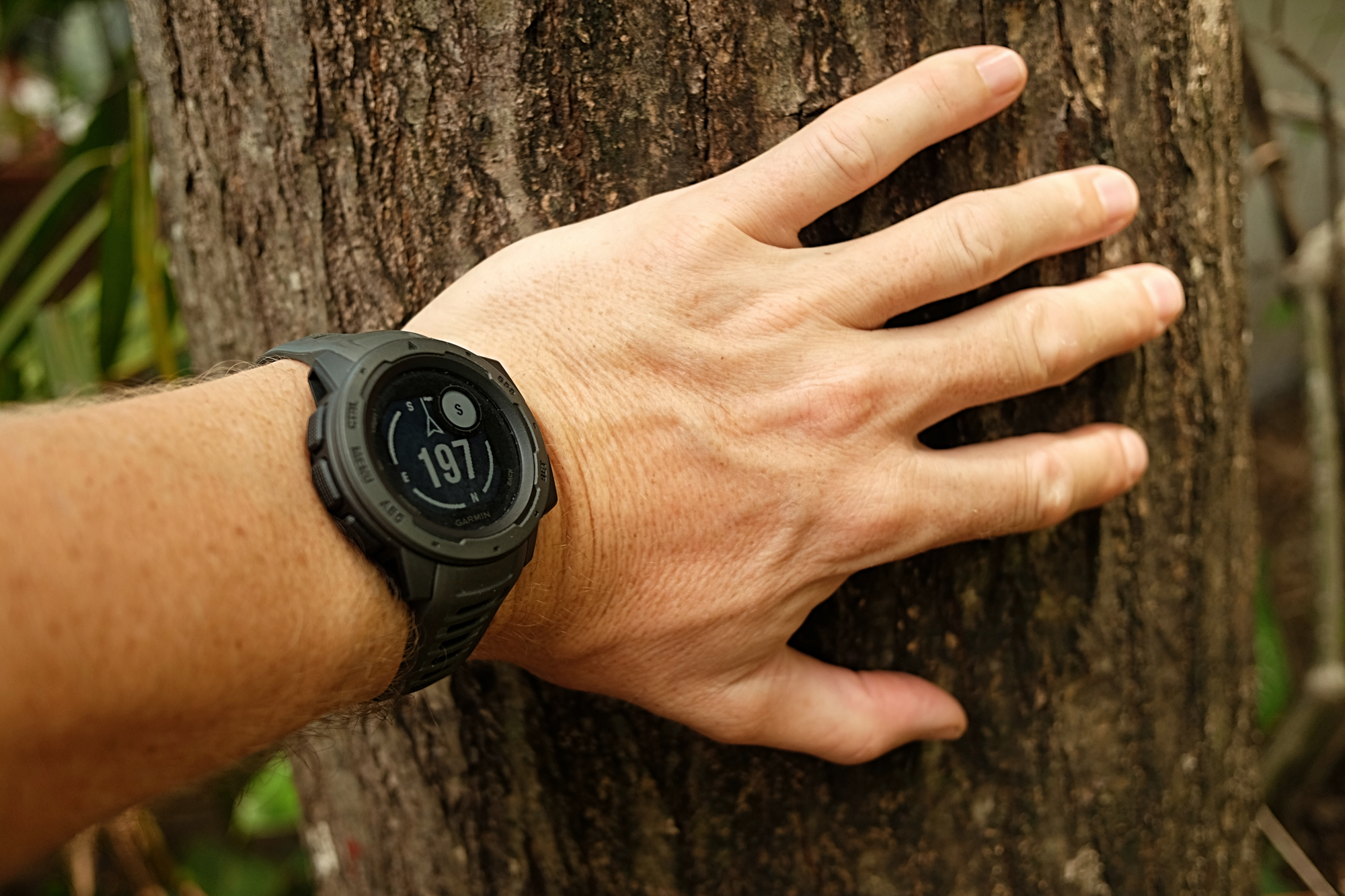Originally Published in Overland Journal, Fall 2019
With cellular phones progressing from calling device to personal computer, the humble watch has also morphed from timekeeping caterpillar to fully fledged, personalized smartwatch butterfly.
Borrowing heavily from the much-lauded Garmin Fenix, the Instinct cannibalizes the best elements of its expensive cousin, ditching well over 50 percent of the price tag. That’s plenty of GPS smartwatch for the money.
The Instinct wears your heart on its sleeve, literally— beaming light onto your wrist to take a heart rate measurement. Its rugged looks also pull no punches with regard to intended use: chunky Casio G-Shock styling parades the MIL-STD 810G standard for shock, thermal, and water resistance. The latter two being between -4°F and 140°F, and a depth of 100 meters, which should cover you for the deepest of river crossings. The case will easily be a match for the mud, dust, sand, oil, sweat, and any knocks you care to throw its way. And the watch is QuickFit 22 compatible, opening an array of watch strap material and colour options.
Full GPS mode gives the battery a decent 16-hour lifespan (up to 40 hours in UltraTrac mode). In straight-up smartwatch mode with activity tracking and heart rate monitoring, a charge-cable-free 14 days is cited. The Instinct can be charged while in use, keeping functionality when the battery starts to tire. But you will have to remove it from your wrist for the one hour it takes, as the charge point is on the rear of the case.
If you have used Garmin devices before, you are likely familiar with the sport mode basics, and all are represented and working as well as expected. What makes the Instinct perfect for our kind are the navigation and smartwatch aspects, both integrated so seamlessly that it’s hard to believe it was not marketed with an “overland” tag. As a keen athlete and endurance sports coach, I purchased the watch for running and hiking, not realizing how much the other features would play a role in my life on the road.
Navigation options include GPS/Glonass/Galileo coverage, a magnetic compass, elevation, course navigation (the ability to upload a course and follow it, great for running in foreign places). If you get lost just hit TracBack to follow your path back to the start. Sunrise and sunset info helps make and break camp. A weather widget and “storm alert” notification aids in deciding whether those clouds mean trouble. And if the worst happens, Garmin has baked ANT+ enabled inReach device control right into the watch. You can send an SOS or satellite message straight from your wrist to contact GEOS 24/7 if you are set up with the service.
The union with your smartphone takes things a step further. Message notifications get (as an option) pinged to your watch. Playing music over your smartphone to a Bluetooth speaker vehicle stereo? Music controls are right on your wrist, leaving your hands free from blind phone rummaging.
This astoundingly well-featured device sits relatively low in the Garmin price range and is built for the active overlander.
$300 | GARMIN.COM




